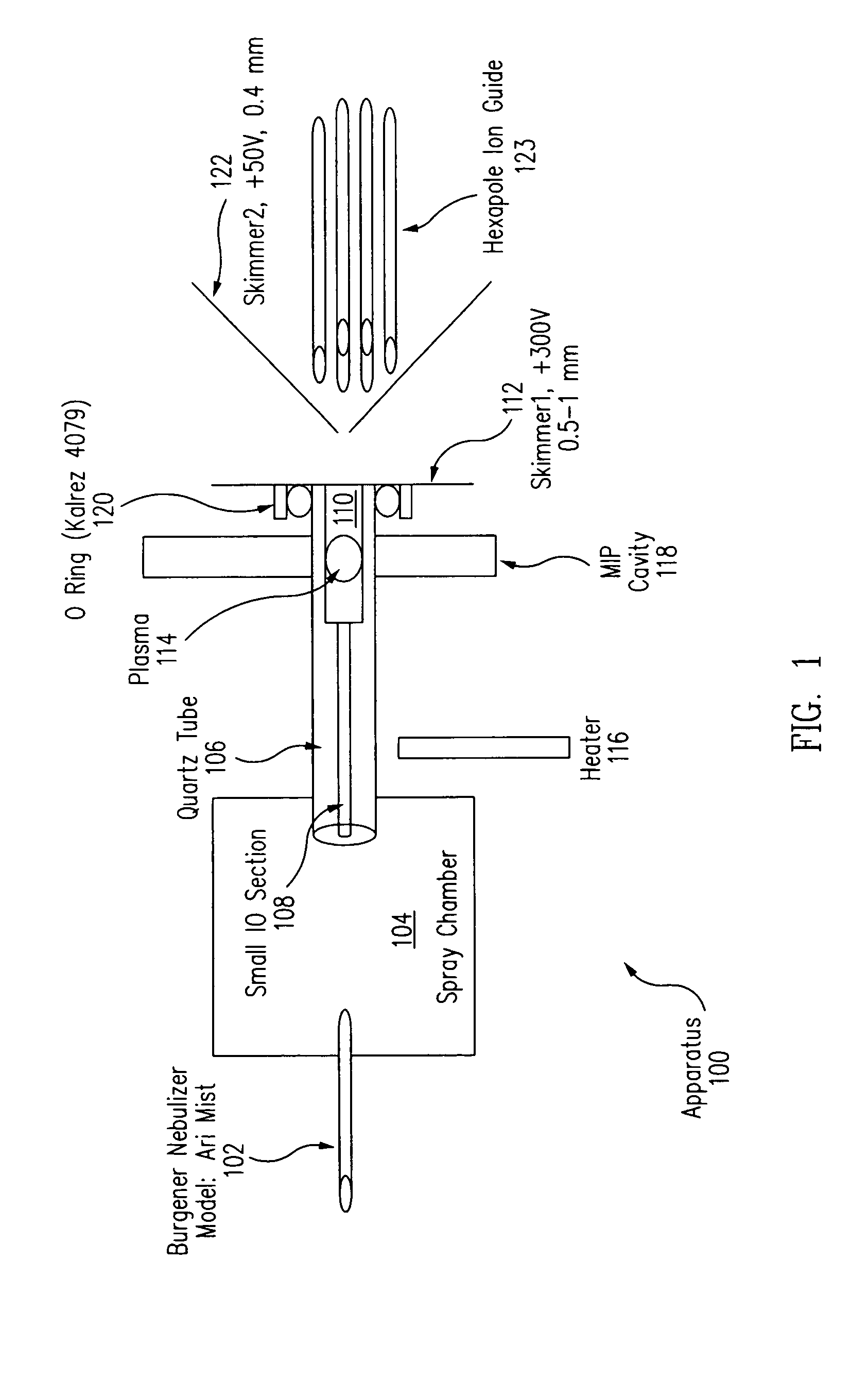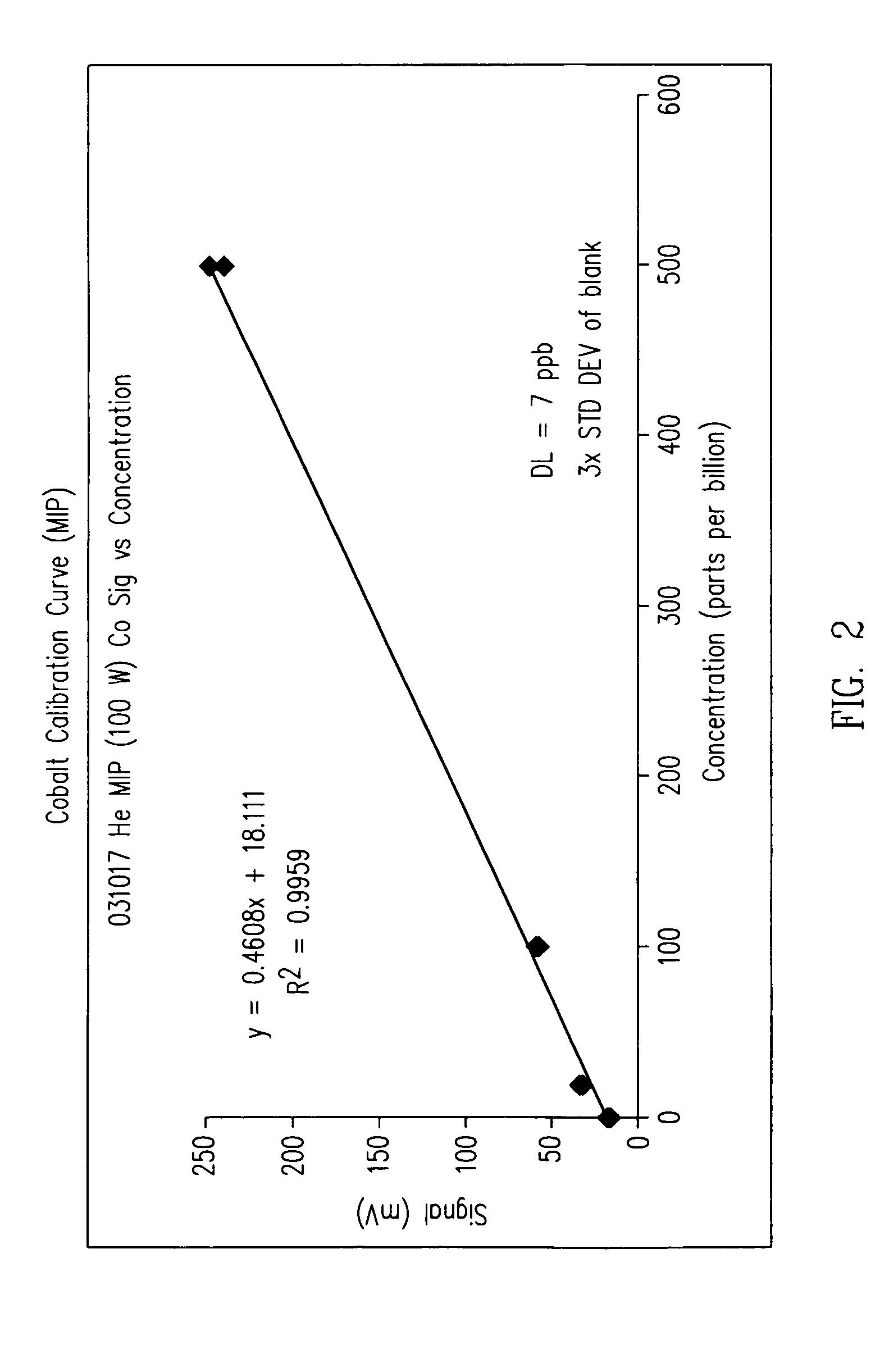Nebulizer with plasma source
a plasma source and nebulizer technology, applied in the field of mass spectrometers using plasma, can solve the problems of reducing the sensitivity of trace contamination, reducing the elemental sensitivity of this type of source, and insufficient energy present in the electrospray ionization source to break all components of the molecular species, etc., to achieve the effect of reducing the power dissipation, reducing the size of the ionization source, and successful
- Summary
- Abstract
- Description
- Claims
- Application Information
AI Technical Summary
Benefits of technology
Problems solved by technology
Method used
Image
Examples
Embodiment Construction
[0033]FIG. 1 is a diagram showing a portion of an apparatus 100 for analyzing gases and chemical solutions according to one embodiment of the present invention. Apparatus 100 includes an electrospray needle or nebulizer 102 that directs nebulized liquid into a sample introduction or spray chamber 104 at atmospheric pressures. In one embodiment, spray chamber 104 may be filled with helium and an aerosol that could be highly acidic. Electrospray needle 102 may be one built by Analytica of Branford or may alternatively be a Burgener nebulizer (e.g., an Ari Mist model), in which the electrospray is used as an atomizer and is not energized electrically. The nebulized liquid is drawn from a sample of solution to be analyzed, such as a SC2 or UPW bath. The nebulized aerosol is formed by combining a carrier gas, such as argon, helium, or nitrogen, with the analyte to form a spray.
[0034]In one embodiment, the pressure of the carrier gas as it is introduced into electrospray needle 102 is app...
PUM
 Login to View More
Login to View More Abstract
Description
Claims
Application Information
 Login to View More
Login to View More - R&D
- Intellectual Property
- Life Sciences
- Materials
- Tech Scout
- Unparalleled Data Quality
- Higher Quality Content
- 60% Fewer Hallucinations
Browse by: Latest US Patents, China's latest patents, Technical Efficacy Thesaurus, Application Domain, Technology Topic, Popular Technical Reports.
© 2025 PatSnap. All rights reserved.Legal|Privacy policy|Modern Slavery Act Transparency Statement|Sitemap|About US| Contact US: help@patsnap.com



